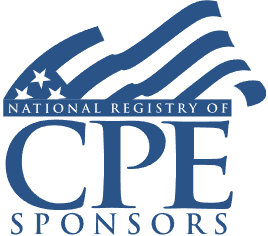Cost Segregation Methods for Tax Professionals, Property Owners, and Investors
Deferring Federal and State Incomes Taxes, Reclassification of Assets, Depreciation, Section 179, Qualified Property Incentives

Course Details
- smart_display Format
On-Demand
- signal_cellular_alt Difficulty Level
Intermediate
- work Practice Area
Tax Law
- event Date
Thursday, November 21, 2024
- schedule Time
1:00 p.m. ET./10:00 a.m. PT
- timer Program Length
90 minutes
-
This 90-minute webinar is eligible in most states for 1.5 CLE credits.
-
BARBRI is a NASBA CPE sponsor and this 110-minute webinar is accredited for 2.0 CPE credits.
-
BARBRI is an IRS-approved continuing education provider offering certified courses for Enrolled Agents (EA) and Tax Return Preparers (RTRP).
This CLE/CPE webinar will guide tax professionals, property owners, and investors through unique opportunities created by the Tax Cuts and Jobs Act of 2017. The panel will discuss a variety of cost segregation methods to defer federal and state taxes, bonus depreciation, Section 179, and challenges for tax professionals when analyzing assets and entity structures.
Faculty

Mr. Shurtz is a Senior Manager in KBKG’s Cost Segregation Consulting practice. He has more than 12 years’ experience in cost segregation, providing reliable, engineering-based results for commercial and retail properties for his clients. Mr. Shurtz is a Certified Cost Segregation Professional (CCSP) with the American Society of Cost Segregation Professionals (www.ASCSP.org). He has overseen hundreds of cost segregation studies and consulted for numerous accounting firms throughout the country. Mr. Shurtz has successfully developed new processes, procedures, and firm software relating to cost segregation. His industry experience includes but is not limited to apartment, assisted living, major grocery stores, manufacturing, office, retail, warehouse, mixed-use space, and more.

Mr. Manolos is a senior manager in KBKG’s Pasadena and Woodland Hills offices and a member of the Firm’s National Tax Practice. With over 15 years of tax experience, he specializes in fixed asset consulting including Cost Segregation studies, repair and maintenance expense analyses, and other tax advisory services specific to cost recovery in the real estate industry. Mr. Manolos is a firm resource and provides engineering analyses for building owners and the firm’s clientele. His responsibilities include reviewing the construction documents and blueprints, inspecting the property, and estimating the quantities and costs of all qualifying assets. Mr. Manolos has managed and performed hundreds of cost segregation studies, including large-scale commercial office complexes, residential rental properties, retail/restaurants, golf courses, hotels, airports, auto dealerships, warehouse/distribution, and manufacturing facilities.
Description
Cost segregation can be used to generate federal and state income tax refunds by deferring depreciation on certain assets. Nonresidential real property is depreciated over 39 years and residential rental property is depreciated over 27.5. If certain portions can be expensed or the depreciable life of an asset shortened, taxpayers can make depreciation adjustments and possibly achieve optimum tax benefits.
Before considering a cost segregation study, tax professionals, property owners, and investors must understand the ins and outs of cost segregation and the intricacies of current depreciation rules to properly claim the benefits of cost segregation studies and depreciation adjustments. A cost segregation allows property owners to identify components of their property and reclassify them into different asset classes to accelerate each asset's depreciation deductions into the current year.
There are varying methods used for cost segregations and varying professionals are available to perform a cost segregation study. Certain types of businesses, including medical practices, commercial properties, apartments, etc., may have greater savings than others. Property owners and investors need to exercise due diligence before engaging in a cost segregation study.
Listen as our panel discusses the ins and outs of cost segregation studies so tax professionals, property owners, and investors can better determine which properties and businesses are most likely to benefit from a study. The panel will also go through key issues that must be considered, various methods, segregating new and old property, and others.
Outline
- Definition of a cost segregation study
- Benefits of a cost segregation study
- Key issues and pitfalls to avoid under current tax law
- Best candidates for cost segregation
- Considerations before engaging in a study
Benefits
The panel will review these and other important issues:
- Cost segregation under current tax law
- Identifying eligible property and businesses
- State of qualified improvement property
- Differences between cost segregation methods
NASBA Details
Learning Objectives
After completing this course, you will be able to:
- Identify tax savings opportunities from cost segregation
- Recognize property likely to benefit from cost segregation
- Discern differences between eligible and ineligible property
- Ascertain differences between cost segregation methods
- Field of Study: Taxes
- Level of Knowledge: Intermediate
- Advance Preparation: None
- Teaching Method: Seminar/Lecture
- Delivery Method: Group-Internet (via computer)
- Attendance Monitoring Method: Attendance is monitored electronically via a participant's PIN and through a series of attendance verification prompts displayed throughout the program
- Prerequisite: Three years+ business or public firm experience preparing complex tax forms and schedules, supervising other preparers or accountants. Specific knowledge and understanding of pass-through taxation, including taxation of partnerships, S corporations and sole proprietorships, qualified business income, net operating losses and loss limitations; familiarity with net operating loss carry-backs, carry-forwards and carried interests.

Strafford Publications, Inc. is registered with the National Association of State Boards of Accountancy (NASBA) as a sponsor of continuing professional education on the National Registry of CPE Sponsors. State boards of Accountancy have final authority on the acceptance of individual courses for CPE Credits. Complaints regarding registered sponsons may be submitted to NASBA through its website: www.nasbaregistry.org.

Strafford is an IRS-approved continuing education provider offering certified courses for Enrolled Agents (EA) and Tax Return Preparers (RTRP).
Related Courses

Taxation of U.S. Persons Owning Foreign Corporations: Strategies for Subpart F and GILTI Inclusions
Friday, April 11, 2025
1:00 p.m. ET./10:00 a.m. PT

U.S. Taxation of Foreign Individuals and Businesses: IRS Compliance and Enforcement
Tuesday, April 22, 2025
1:00 p.m. ET./10:00 a.m. PT

Equity Compensation Grants in Partnerships and LLCs: Overcoming Tax Challenges and Key Planning Techniques
Tuesday, April 22, 2025
1:00 p.m. ET./10:00 a.m. PT
Recommended Resources
How CPE Can Bridge the Gap Between What You Know and What You Need to Know
- Career Advancement
Gain a Competitive Edge Through Efficient CPE Strategies
- Learning & Development
- Business & Professional Skills
- Career Advancement